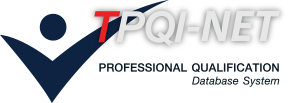หน่วยสมรรถนะ
Test and troubleshoot aircraft instrument systems and components.
สาขาวิชาชีพการบิน
รายละเอียดหน่วยสมรรถนะ
| 1. รหัสหน่วยสมรรถนะ | AVT-FTN-4-078ZA |
| 2. ชื่อหน่วยสมรรถนะ | Test and troubleshoot aircraft instrument systems and components. |
| 3. ทบทวนครั้งที่ | - / - |
| 4. สร้างใหม่ |
|
ปรับปรุง |
|
| 5. สำหรับชื่ออาชีพและรหัสอาชีพ (Occupational Classification) | |
|
|
|
| 6. คำอธิบายหน่วยสมรรถนะ (Description of Unit of Competency) | |
| This unit of competency requires application of hand skills, standard trade practices and systems knowledge in the testing and troubleshooting of aircraft instrument and display systems and components during both scheduled and unscheduled maintenance on both fixed and rotary wing aircraft. Work may be completed individually or as part of a team. | |
| 7. สำหรับระดับคุณวุฒิ |
| 1 | 2 | 3 | 4 | 5 | 6 | 7 | 8 |
|---|---|---|---|---|---|---|---|
| 8. กลุ่มอาชีพ (Sector) | |
| 7232 Aircraft Mechanics | |
| 9. ชื่ออาชีพและรหัสอาชีพอื่นที่หน่วยสมรรถนะนี้สามารถใช้ได้ (ถ้ามี) | |
| N/A | |
| 10. ข้อกำหนดหรือกฎระเบียบที่เกี่ยวข้อง (Licensing or Regulation Related) (ถ้ามี) | |
| ICAO Doc 7192 / EASA Part 66 | |
| 11. สมรรถนะย่อยและเกณฑ์การปฏิบัติงาน (Elements and Performance Criteria) |
| หน่วยสมรรถนะย่อย (EOC) | เกณฑ์ในการปฏิบัติงาน (Performance Criteria) | รหัส PC (ตามเล่มมาตรฐาน) |
รหัส PC (จากระบบ) |
|---|---|---|---|
| 103407.01 Prepare for troubleshooting, test/adjust instrument and display systems. | 103407.01.01 Able to interpret relevant maintenance documentation andmodification status, including system defect/servicedifficulty reports, where relevant, to identify an unserviceability andprepare the aircraft and systems correctly in accordance with specifiedprocedures for the application of power and system operation | 103407.01.01 | 71280 |
| 103407.01 Prepare for troubleshooting, test/adjust instrument and display systems. | 103407.01.02 Able to functionallytest Instrument or display system is in accordance with specified proceduresfor evidence of serviceability or malfunction while observing all relevantwork health and safety (WHS) requirementsand perform system calibration or adjustments in accordance with specifiedprocedures | 103407.01.02 | 71281 |
| 103407.02 Troubleshoot instrument and display systems. | 103407.02.01 Able to use maintenance manual fault diagnosis guides andlogic processes to ensure efficient and accurate troubleshooting to linereplacement levelandable to obtain specialist advice, where required, toassist with the troubleshooting process | 103407.02.01 | 71282 |
| 103407.02 Troubleshoot instrument and display systems. | 103407.02.02 Able to locateInstrument or display system faults and the causes of the faults are clearlyidentified and correctly recorded in maintenance documentation, whererequired and able to determine fault rectification requirements to assist inplanning the repair or adjustment. | 103407.02.02 | 71283 |
| 12. ความรู้และทักษะก่อนหน้าที่จำเป็น (Pre-requisite Skill & Knowledge) | |
|
|
|
| 13. ทักษะและความรู้ที่ต้องการ (Required Skills and Knowledge) | |
|
(ก) ความต้องการด้านทักษะ
(ข) ความต้องการด้านความรู้
|
|
| 14. หลักฐานที่ต้องการ (Evidence Guide) | |
|
|
|
| 15. ขอบเขต (Range Statement) | |
|
• Industry standard procedures specified by manufacturers, regulatory authorities or the enterprise |
|
| 16. หน่วยสมรรถนะร่วม (ถ้ามี) | |
| N/A | |
| 17. อุตสาหกรรมร่วม/กลุ่มอาชีพร่วม (ถ้ามี) | |
| N/A | |
| 18. รายละเอียดกระบวนการและวิธีการประเมิน (Assessment Description and Procedure) | |
|
• This shall be established via the records in the Log of Industrial Experience and Achievement or, where appropriate, an equivalent Industry Evidence Guide. |
|
